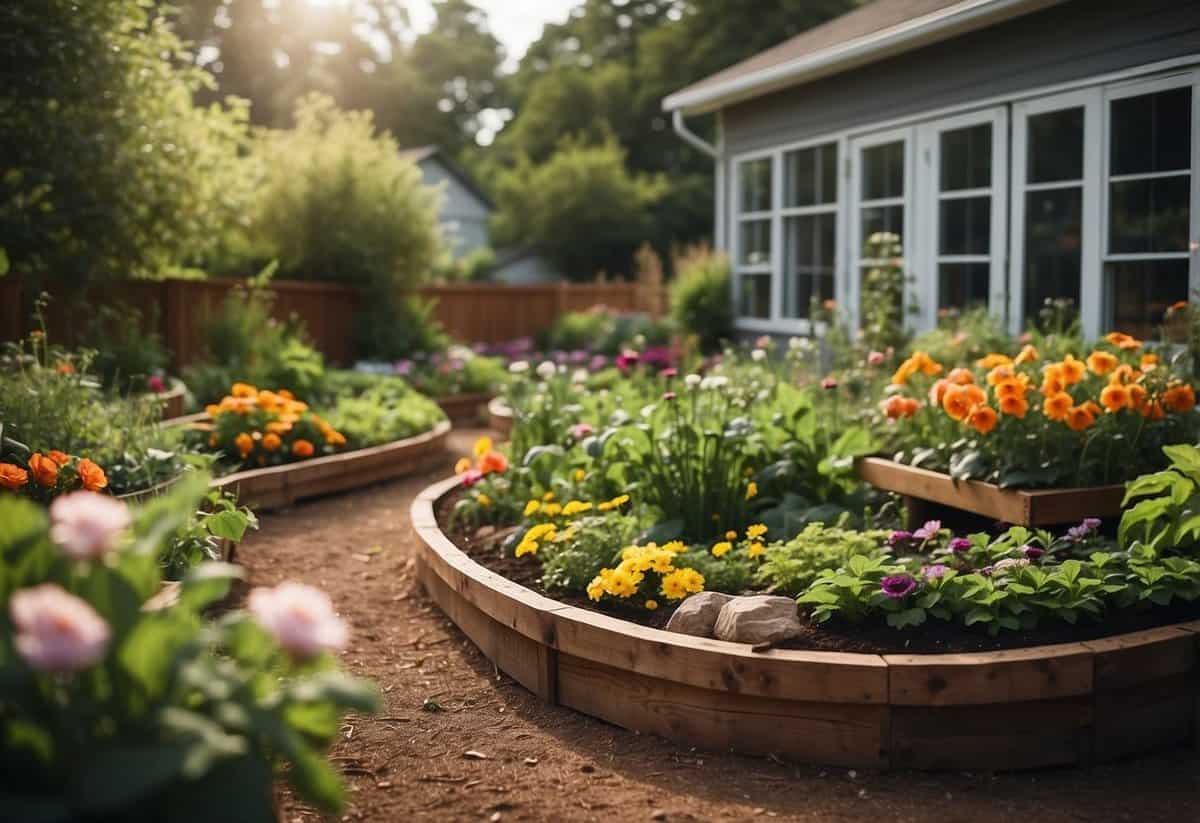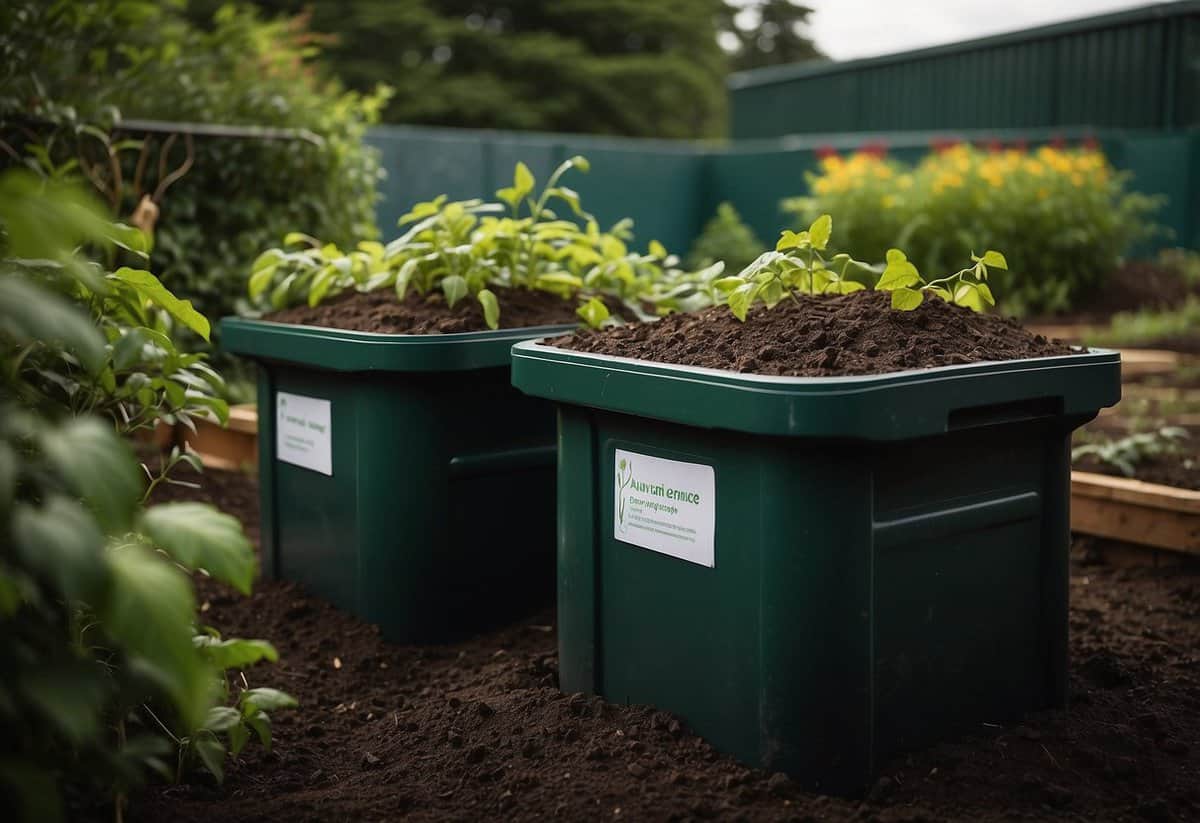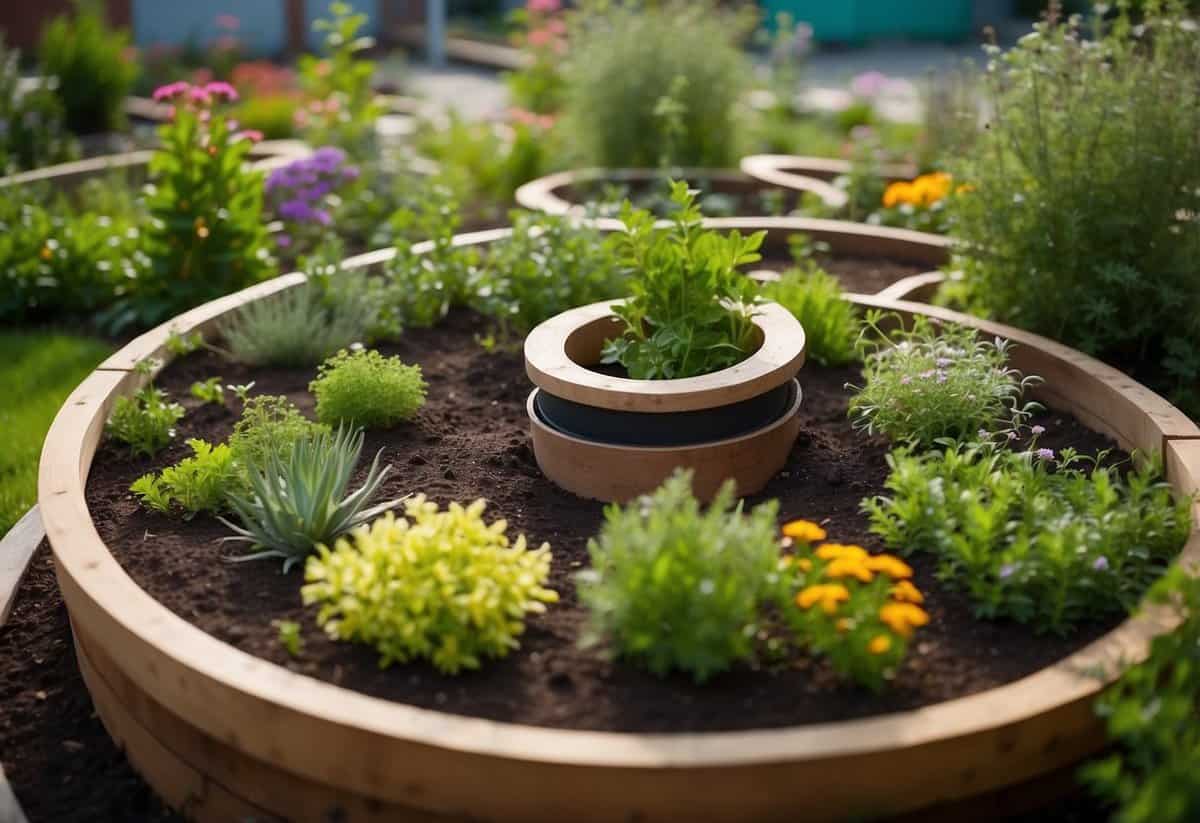School Garden Tips: Grow a Thriving Green Space
Creating a school garden can be a rewarding project that not only beautifies school grounds but also provides valuable learning experiences for students. Gardens can teach kids about science, nutrition, and responsibility in a hands-on way. What are some key tips to successfully start and maintain a school garden?

Building a school garden involves thoughtful planning and collaboration. With the right guidelines and support, your school garden can thrive and become a favorite spot for students and teachers alike. Get ready to cultivate a green space that enriches everyone’s lives.
1) Raised Beds

Raised beds are a great way to start a school garden. They help control soil quality and drainage. You can use wood, bricks, or other materials to build them.
To prevent weeds, cover the bottom with cardboard or newspaper before adding soil. This helps keep the garden neat and clean. Fill the beds with a mix of compost and topsoil for best results. For more tips, visit KidsGardening.
2) Compost Bins

Setting up a compost bin at your school is a great way to recycle food and garden waste.
Start by choosing a shady spot near your garden. It helps keep the compost from drying out too quickly.
You can use a simple enclosure like a 3.5’ x 3.5’ box to keep out animals.
Always remember to label your bins. Separate bins for food scraps, compostable paper, and garden waste will make the process easier.
3) Rain Barrels

Using rain barrels in your school garden can be a great way to save water. They collect rainwater from the gutters, which you can use to water your plants.
Make sure the rain barrel has a filter screen to keep leaves and debris out. A 50-gallon barrel is usually enough for a small garden.
Don’t use water from rain barrels on edible plants because it may have dirt and dust from the roof.
4) Mulching Techniques

Mulching is a great way to help your school garden thrive. It retains moisture, suppresses weeds, and enriches the soil.
Start by choosing the right type of mulch. Organic options like shredded wood, leaves, or straw work well. They break down and improve the soil over time.
Apply mulch evenly around your plants. Aim for a layer about 2-3 inches thick. Be careful not to smother your plants by piling it against the stems.
Remember to replenish your mulch regularly as it decomposes. This keeps your garden looking neat and your plants healthy. For more tips, check out these garden mulching techniques.
5) Native Plants

Using native plants in your school garden is a great idea. They are suited to the local climate and need less water and care. This makes them easier to maintain.
Native plants also support local wildlife. They provide food and shelter for birds, butterflies, and other animals. This can turn your garden into a lively habitat.
Educators and parents can find helpful advice on selecting and planting native plants in the NPSNJ School Guide. These resources are designed to make gardening simpler and more impactful.
6) Outdoor Classroom Space

An outdoor classroom space is a great way to bring learning to life. It allows students to connect with nature and get hands-on experience.
Consider setting up benches or seating areas in the garden. This makes it easy for students to gather and learn comfortably.
Using an outdoor space helps students stay active. They can move, explore, and engage with the garden in ways they can’t inside a traditional classroom. For more tips on creating an outdoor classroom, check out these school garden resources.
7) Pollinator Garden

Creating a pollinator garden at school is fun and educational. Start by choosing a variety of native plants. These attract bees, butterflies, and other pollinators and help create a balanced ecosystem.
Plant flowers in different colors and shapes. This will attract more species. Think about flowers in shades of blue, purple, yellow, and red for the best results.
Make sure to water the plants, especially during summer. This will keep them healthy and blooming. Adding DIY bee houses can also help support the pollinators through winter.
8) Herb Spiral Garden

An herb spiral garden is a great addition to any school garden. It uses vertical space efficiently, making it perfect for small areas.
Start by choosing a sunny spot. Gather stones, bricks, or other materials to create a spiral shape.
Build the spiral by stacking the materials, with the center being higher than the edges. This design helps with drainage, giving you different moisture levels for various herbs.
Plant herbs that like well-drained soil at the top and those that prefer more moisture at the bottom. This setup gives each herb the conditions it loves to grow best.
9) Recycled Materials

Using recycled materials in your school garden is a great way to teach students about reusing and caring for the environment.
For seed storage, you can use paper envelopes. They keep seeds dry and organized.
Old boots or kitchenware make fun and quirky planters. Kids can decorate them.
Plastic bottles can be turned into mini greenhouses. It’s a simple and effective way to protect young plants.
Encourage creativity and sustainability by finding new uses for old items in the garden.
10) Seasonal Planting Guides

You need to plan according to the seasons to keep your school garden growing well. In spring, you can plant cool-season crops like cabbage and broccoli. Flowers such as pansies also do well.
In summer, focus on warm-loving plants like tomatoes and sunflowers. They thrive in the hotter months.
As fall approaches, consider planting root vegetables like carrots and beets. They prefer cooler weather.
For winter, stick with hardy greens such as spinach and kale. They can handle the cold better than most plants.
For more detailed plans, check out this seasonal planting guide.
Benefits Of A School Garden

School gardens provide numerous benefits. They encourage healthier eating habits and increase physical activity among students. By engaging in gardening, students can learn where their food comes from and develop a sense of responsibility and teamwork.
Promoting Healthy Eating Habits
School gardens can help students develop a preference for fruits and vegetables. When children grow their own food, they are more likely to try and enjoy eating fresh produce. Gardening teaches them how different fruits and vegetables grow and the best ways to harvest and prepare them.
Gardening lessons can cover how to plant seeds, care for plants, and harvest the produce. This hands-on experience is valuable. It can also include teaching kids how to cook simple, healthy meals using garden produce.
Involving students in gardening can also increase their understanding of nutrition. They learn about the vitamins and minerals found in different foods. Over time, this can lead to better food choices and improved health.
Encouraging Outdoor Activity
Gardening is a great way to get kids moving. It involves activities like digging, planting, watering, and weeding, which are good physical exercises. Unlike playing sports, gardening can be less competitive and more inclusive of all students.
Time spent in the garden can also reduce stress and improve focus. Outdoor activity in green spaces has been shown to increase alertness and enhance learning. Fresh air and sunlight are important for overall well-being.
Gardening can help develop teamwork skills. Students often have to work together to maintain the garden, sharing tasks and responsibilities. This teamwork can improve social skills and build a sense of community among students.
Planning Your School Garden

Planning a school garden involves finding the best spot with good sunlight and deciding on the fruits, vegetables, and flowers to plant. Both of these steps set the foundation for a successful garden.
Choosing The Right Location
You need to find a place that gets plenty of sunlight. Most plants need at least six hours of sunlight each day to grow well. Look for an area in the schoolyard that isn’t shaded by buildings or trees.
Access to water is important too. Having a water source nearby will make it easier to keep your garden well-watered. If the garden is too far from water, it can become challenging to maintain.
Students should be able to reach the garden easily and safely. Choose a spot that is not only accessible but also has good drainage. Poor drainage can lead to plant diseases and other problems. Consider spaces like unused plots, courtyards, or even rooftops to maximize available space.
Deciding What To Grow
Choosing what to grow depends on your local climate and available space. Start with plants that are easy to grow and maintain. Vegetables like tomatoes, beans, and lettuce are popular choices. Flowers like marigolds and sunflowers can add color and help attract pollinators.
Mixing fruits, vegetables, and flowers can make the garden more interesting and beneficial for learning. Some common options include strawberries, cucumbers, and carrots. You can also plant herbs like basil and mint, which are easy to grow and can be used in the kitchen.
Consider using raised garden beds for better soil control. You can plant in a grid pattern to maximize space. Raised beds also make the garden more accessible for all students, including those with mobility issues.
Maintaining Your School Garden

Keeping a school garden in good shape during the summer requires proper watering and pest control. These simple tips will help ensure your garden thrives.
Watering Tips
Watering is crucial for a healthy garden. In the summer, plants need water every day or every other day. It’s best to water early in the morning or late in the evening. This reduces water evaporation and helps plants absorb moisture before the heat of the day.
Use a soaker hose or drip irrigation system to deliver water directly to the roots. This saves water and keeps the plant leaves dry, which can prevent diseases. If you’re using a watering can, aim for the base of the plant rather than the leaves.
Check your soil by sticking your finger a few inches into it. If it feels dry, it’s time to water. Mulching around plants can also help retain moisture by reducing evaporation.
Dealing with Pests
Pests can be a major problem in school gardens. Regularly inspect your plants for signs of pests like chewed leaves or sticky residue. Remove any visible insects by hand and dispose of them away from the garden.
Introduce beneficial insects like ladybugs and praying mantises, which can help control pests naturally. You can also use organic pesticides like neem oil or insecticidal soap, but follow the instructions carefully to avoid harming the plants.
Another method is crop rotation. Plant different crops in different areas each year to reduce the buildup of pests in the soil. This can help keep your garden healthier and more productive.
Remember, the key to a successful garden is consistent care and attention. By following these tips, you’ll keep your school garden flourishing all summer long.







